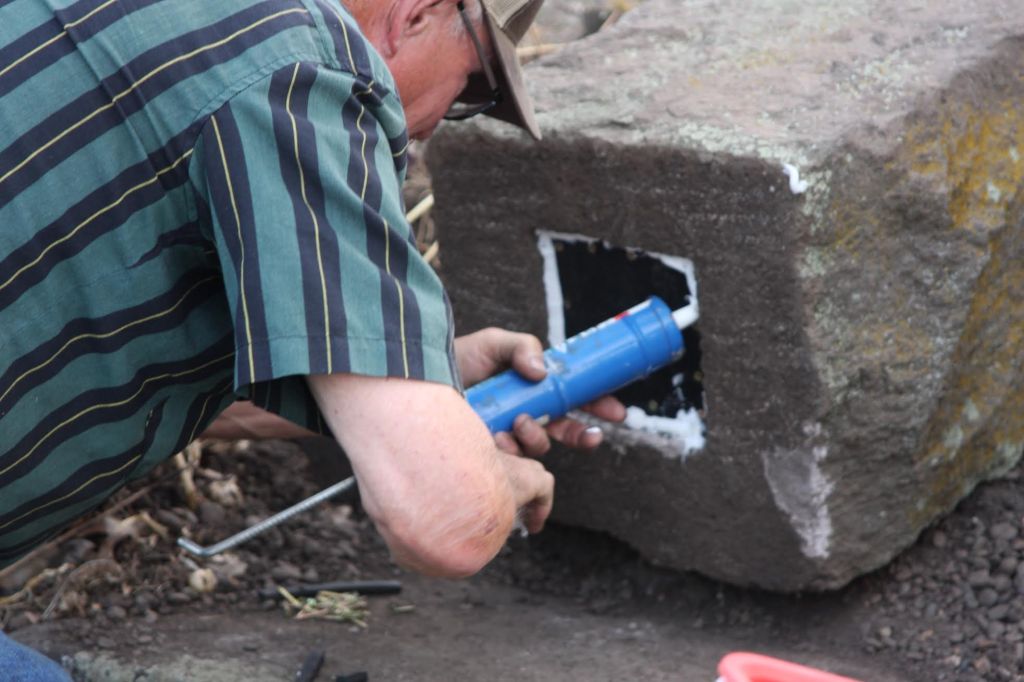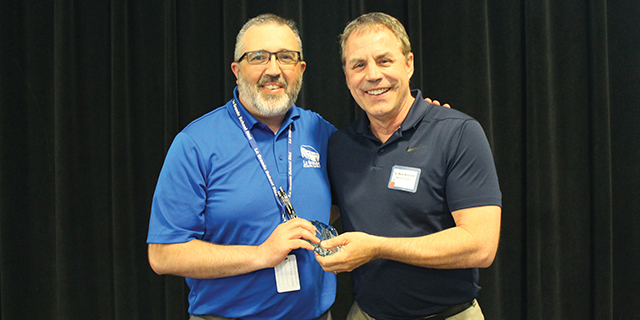New time capsule placed within Oregon Trail marker in La Grande
Published 9:00 am Thursday, July 14, 2022

- Dale Counsell applies caulking on Thursday, June 30, 2022, to seal a time capsule space in a stone Oregon Trail marker at 110 Walnut St., La Grande.
LA GRANDE — A piece of paper currency may be the talk of La Grande a century from now.
A $1 bill was placed in a new time capsule at 110 Walnut St. on Thursday, June 30, with other items in the time capsule space of the stone marker first installed by Oregon Trail pioneer Ezra Meeker in 1906.
The marker is the same one opened on June 23 and found to be empty before a crowd of about 150 people. Many had thought the time capsule space in the marker would have contents dating back to 1906 because Meeker mentioned it in his journals.
The $1 bill was put in the marker’s time capsule space along with an Oregon Trail brochure, a copy of the Overland Journal (a quarterly publication of the Oregon-California Association) plus items that are or recently have been integral parts of our daily lives, including two face masks, a COVID-19 home test kit and an iPhone.
Most of the new materials in the time capsule were placed in a protective bag. Now they must withstand the touch of Father Time’s corrosive hand.
“We do not want it opened for 100 years,” said Ronnie Allen, of La Grande, an Oregon Trail historian who helped lead the effort to have the new time capsule items placed within the stone marker.
Dale Counsell, of La Grande, who also helped Allen set up the new time capsule project, said a sealant was applied to the area where the stone marker was attached to its foundation. The sealant should help protect the contents of the time capsule.
The stone marker is among at least 35 Meeker set up along the Oregon Trail during the three journeys he made across the United States to promote efforts to preserve the overland route. It was one of three Meeker put up in Union County. The two others were installed at lower and upper Ladd Canyon.
Allen says he now has evidence indicating that the Walnut Street marker was made from lava flows underlying the north flank of Sugarloaf Mountain, about 9 miles northwest of La Grande. An analysis of the stone the marker was made from was completed by the Baker City field office of the Oregon Department of Geology and Mineral Industries.
The testing conducted in June indicates that the marker was made from rock that is identical to the stone the one at lower Ladd Canyon was made from. Allen earlier had the stone from the lower Ladd Canyon marker tested by the same office, which determined it likely came from Sugarloaf Mountain.





